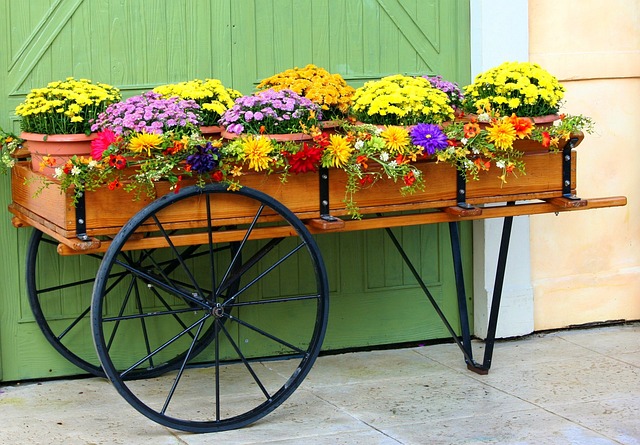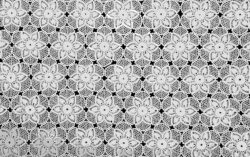
Your outdoor planters, be they flower pots, hanging baskets, or garden boxes, are the unsung heroes of your home’s exterior. Over time, they accumulate dirt, algae, and mineral deposits that can hinder plant growth and compromise the aesthetic appeal of your outdoor space. Fear not, as we unveil a comprehensive guide on how to clean and revitalize your home’s outdoor planters. This step-by-step approach ensures your planters not only support healthy plant life but also become stunning focal points in your garden.
See also our post on Outdoor Adventures, Clean and Safe: Camping Hygiene Essentials
Assessing the Damage
- Examine Planter Material: Different materials require varied cleaning approaches. From plastic to ceramic, understanding your planter’s composition is the first step.
- Check Drainage Holes: Ensure proper drainage by clearing any clogs in the holes. Effective drainage prevents waterlogged soil and root rot.
- Inspect Plant Health: Before diving into cleaning, evaluate the condition of your plants. Remove any dead or diseased foliage to encourage new growth.
- Identify Stains: Note any stubborn stains or discoloration. This information will guide your choice of cleaning agents.
- Evaluate Surrounding Environment: Consider factors like sun exposure and weather conditions, as these impact the frequency and intensity of cleaning required.
Gathering Essential Tools and Supplies
- Gloves and Protective Gear: Shield your hands and clothing from potential irritants or harsh cleaning agents.
- Soft-Bristled Brush: Ideal for scrubbing away dirt and algae without damaging delicate surfaces.
- Mild Detergent or Soap: Choose a gentle, eco-friendly soap for general cleaning, avoiding harsh chemicals that may harm your plants.
- White Vinegar: An excellent natural solution for dissolving mineral deposits and eliminating stains.
- Old Toothbrush: Perfect for reaching intricate corners and stubborn spots.
Cleaning Different Planter Materials
Clay and Ceramic Planters
- Soak in Soapy Water: Fill a basin with mild soapy water and let clay or ceramic planters soak for a few hours.
- Scrub with Brush: Gently scrub the surface with a soft brush to remove dirt and stains.
- Rinse Thoroughly: Ensure all soap residue is washed away, and let the planters air-dry completely before refilling with soil and plants.
Plastic and Resin Planters
- Wipe Down with Detergent: Use a damp cloth or sponge with mild detergent to wipe down the exterior.
- Remove Stubborn Stains with Vinegar: For persistent stains, apply a mixture of vinegar and water, then wipe clean.
- Check for Cracks: Inspect for cracks or damage, as plastic can degrade over time. Replace any compromised planters.
Metal Planters
- Remove Rust: Gently scrub rusted areas with a wire brush or steel wool. Apply rust converter for long-lasting protection.
- Clean with Soapy Water: Wash the entire surface with soapy water to eliminate dirt and grime.
- Apply Protective Coating: To prevent future rusting, apply a metal-friendly sealant or paint after cleaning.
Algae Removal and Prevention
- Scrub with Brush and Water: Use a brush and water to physically remove algae from planter surfaces.
- Apply White Vinegar: For persistent algae, mix vinegar and water, applying the solution and letting it sit for 15-20 minutes before scrubbing.
- Increase Sunlight Exposure: Ensure adequate sunlight reaches your planters, as reducing shade can inhibit algae growth.
- Regularly Rotate Planters: Rotate your planters periodically to expose all sides to sunlight, preventing algae buildup.
- Consider Natural Algae Inhibitors: Introduce aquatic plants like water hyacinth to absorb excess nutrients and discourage algae growth.
See also our post on The Ultimate Guide on How to Clean and Care for Your Outdoor Planters and Pots
Dealing with Mineral Deposits
- Soak in Vinegar Solution: Submerge planters in a vinegar and water solution to dissolve mineral deposits.
- Scrub with Toothbrush: Target specific areas with a toothbrush for more stubborn deposits.
- Rinse Thoroughly: Ensure all traces of vinegar are washed away to prevent harm to plants.
- Adjust Water Source: If possible, use rainwater or distilled water to minimize mineral buildup.
- Consider Water Softeners: Install water softeners in areas with hard water to reduce mineral content and protect your planters.
Seasonal Maintenance
- Empty and Clean Regularly: Empty planters between seasons, clean thoroughly, and inspect for any wear or damage.
- Inspect for Pests: Look for signs of pests or insects that might have made a home in the soil.
- Replace Soil: Refresh soil annually to provide nutrients for healthy plant growth.
- Prune and Trim Plants: Maintain the size and shape of your plants by pruning and trimming as needed.
- Weather-Appropriate Planters: Choose planters that withstand seasonal changes, ensuring durability against harsh weather conditions.
See also our post on The Complete Guide to Cleaning and Maintaining Your Outdoor Play Equipment
Conclusion
Reviving your home’s outdoor planters adds visual appeal to your garden and benefits your plants’ health. With these easy-to-follow cleaning methods and proactive maintenance strategies, you will make your outdoor space welcoming and flourishing for you and your green friends. After all, a little TLC goes a long way toward turning your planters into colorful exhibits of natural beauty.



